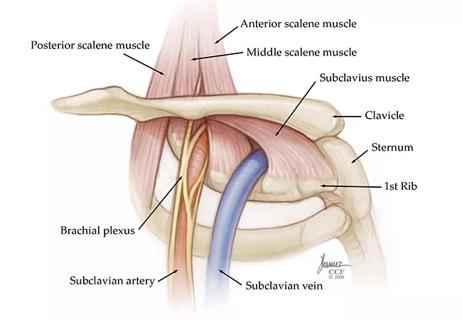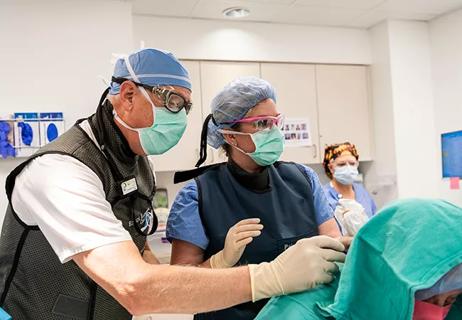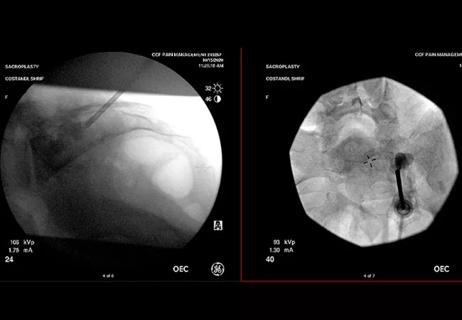Insights from Cleveland Clinic’s Chairman of Pain Management

At the time of this interview, it was reported that 43 people had died from an opioid overdose in a 10-day period in Cuyahoga County alone, where Cleveland Clinic’s main campus is located. News like this has become regular fare across the state of Ohio. Richard W. Rosenquist, MD, Chairman of the Department of Pain Management at Cleveland Clinic responds to questions about the crisis.
Advertisement
Cleveland Clinic is a non-profit academic medical center. Advertising on our site helps support our mission. We do not endorse non-Cleveland Clinic products or services. Policy
We chose the wrong thing. In the 1990s the medical community began looking at pain as the fifth vital sign. We thought we could get to zero and our society decided a pill was the best approach. Pharmaceutical companies came out with opioid medications and poured money into marketing them. The problem is that these medications lead to physical dependence. After just eight days, the risk of long-term opioid use is 13.5 percent. After a month of use, the risk goes up to 29.9 percent. [Statistics are according to the Centers for Disease Control and Prevention.]
In addition to CDC guidelines, there is a lot of activity at the state and federal levels with regard to prescribing. In Ohio, new rules go in effect soon to limit health professionals to prescribing only up to seven days of painkillers for adults and five days for kids and teens, with no more than 30 morphine equivalents per day. These limits will apply to acute pain patients, with exceptions for cancer and hospice patients. We will also have to provide the diagnosis that requires opioid analgesics on the prescription and clearly document the reason for any variation from the acute prescribing rules.
We have to address the current crisis and we need to stem the tide going forward. Broadly, there are three populations to consider. The first is the opioid naïve patient who presents with an early chronic pain condition who should be managed with non-opioid alternatives, with rare exceptions. The second group is patients with chronic pain who were started on opioid therapy and need to be weaned off and treated with non-opioid approaches. And finally, we have patients with clear-cut addiction who need access to appropriate short and long-term treatment.
Advertisement
The first patient requires education, and we need to adhere to stricter prescribing practices and set realistic expectations with regard to pain and its treatment. In most cases, it is not as simple as a pill, and it will require significant effort on the part of patient. We need to help them understand the difference between pain that provides protective information and pain/discomfort that is part of the healing process, such as muscle soreness after exercise.
The second patient also requires education, which means helping them to understand the lack of evidence for improved outcomes with opioids and the significant evidence around increased pain and adverse effects in the short- and long-term.
Finally, the addicted patient will require significantly more funding and a marked increase in providers with the expertise to care for them.
At Cleveland Clinic, we often see patients after a pain clinic has closed who are looking to us to fill their previous prescription. We communicate with them before their appointment that we aren’t just going to refill their prescription. Our goal will be to develop a non-opioid based treatment plan for their pain.
At the first appointment with a patient I ask, “How can I help you get back to your previous functionality?” I ask what it is they want to be able to do. Sometimes it’s as simple as taking a walk with their spouse. It involves getting to know patients. We have to listen, we have to educate and we have to change expectations about pain. Patients need to know that they have to be actively involved in feeling better.
Advertisement
Nearly 80 percent of people currently using heroin started after being on a prescription opioid. This makes it imperative that we reduce the number of opioid prescriptions if we are ever to get this crisis under control.
Advertisement
Advertisement

Program enhances cooperation between traditional and non-pharmacologic care

Pain specialists can play a role in identifying surgical candidates

Clinical judgment is foundational to appropriately prescribing

The device is a less invasive alternative for patients who are struggle with chronic pain

The Four Pillar Project provides physicians with evidence-based talking points to quickly identify problem areas and educate patients to optimize important aspects of their health.

When conservative approaches don’t work, it may be time to turn to sacroplasty

Fourth iteration of the guidelines focuses on high-risk patient identification and evidence on newer drugs

It is a lifestyle commitment that can minimize pain and improve lives